National Historic Sites of Canada
National Historic Sites of Canada (French: Lieux historiques nationaux du Canada) are places that have been designated by the federal Minister of the Environment on the advice of the Historic Sites and Monuments Board of Canada (HSMBC), as being of national historic significance.[1][2] Parks Canada, a federal agency, manages the National Historic Sites program. As of August 2019, there were 996 National Historic Sites,[3][4] 172 of which are administered by Parks Canada; the remainder are administered or owned by other levels of government or private entities.[5] The sites are located across all ten provinces and three territories, with two sites located in France (the Beaumont-Hamel Newfoundland Memorial and Canadian National Vimy Memorial).[6]
There are related federal designations for National Historic Events and National Historic Persons.[7] Sites, Events and Persons are each typically marked by a federal plaque of the same style, but the markers do not indicate which designation a subject has been given. The Rideau Canal is a National Historic Site, while the Welland Canal is a National Historic Event.[8]
History
Early developments


Emerging Canadian nationalist sentiment in the late 19th century and early 20th century led to an increased interest in preserving Canada's historic sites.[10] There were galvanizing precedents in other countries. With the support of notables such as Victor Hugo and Eugène Viollet-le-Duc, the Commission des monuments historique was created in France in 1837; it published its first list of designated sites, containing 934 entries, in 1840. In the United Kingdom, the National Trust for Places of Historic Interest or Natural Beauty was created in 1894 to protect that country's historic and natural heritage.[11][12] While there was no National Park Service in the United States until 1916, battlefields of the Civil War were designated and managed by the War Department: Chickamauga and Chattanooga (created 1890), Antietam (1890), Shiloh (1894), Gettysburg (1895), Vicksburg (1899), and Chalmette (1907).[13][14]
Domestically, Lord Dufferin, the Governor General from 1872 to 1878, initiated some of the earliest, high-profile efforts to preserve Canada's historic sites. He was instrumental in stopping the demolition of the fortifications of Quebec City, and he was the first public official to call for the creation of a park on the lands next to Niagara Falls.[14][15]
The 1908 tricentennial of the founding of Quebec City, and the establishment that same year of the National Battlefields Commission to preserve the Plains of Abraham, acted as a catalyst for federal efforts to designate and preserve historic sites across Canada.[16] At the same time, the federal government was looking for ways to extend the National Park system to Eastern Canada.[10] The more populated east did not have the same large expanses of undeveloped Crown land that had become parks in the west, so the Dominion Parks Branch (the predecessor to Parks Canada) looked to historic features to act as focal points for new national parks. In 1914, the Parks Branch undertook a survey of historic sites in Canada, with the objective of creating new recreational areas rather than preserving historic places. Fort Howe in Saint John, New Brunswick was designated a national historic park in 1914, named the "Fort Howe National Park". The fort was not a site of significant national historic importance, but its designation provided a rationale for the acquisition of land for a park. Fort Anne in Annapolis Royal, Nova Scotia was also designated in 1917.[17]
In 1919, William James Roche, the Minister of the Interior, was concerned over the fate of old fur trade posts in Western Canada, and he was also being lobbied by historical associations across Canada for federal funds to assist with the preservation and commemoration of local landmarks. At the same time, the Department of Militia and Defence was anxious to transfer old forts, and the associated expenses, to the Parks Branch. Roche asked James B. Harkin, the first Commissioner of Dominion Parks, to develop a departmental heritage policy. Harkin believed that the Parks Branch did not have the necessary expertise to manage historic resources; he was troubled by the relatively weak historic value of Fort Howe, the country's first historic park, and feared that the Branch's park improvements were incompatible with the heritage attributes of Fort Anne, the second historic park.[18]
Historic Sites and Monuments Board of Canada
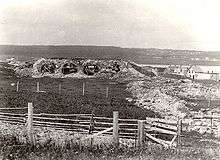
On Harkin's recommendation, the government created the Advisory Board for Historic Site Preservation (later called the Historic Sites and Monuments Board of Canada) in 1919 in order to advise the Minister on a new program of National Historic Sites.[10] Brigadier General Ernest Alexander Cruikshank, a noted authority on the War of 1812 and the history of Ontario, was chosen as the Board's first chairman, a post he held for twenty years.[20] The first place designated and plaqued under the new program was the "Cliff Site" in Port Dover, Ontario, where two priests claimed sovereignty over the Lake Erie region for Louis XIV of France in 1670.[21]
Due to a lack of resources, the HSMBC limited itself to recommending sites for designation, and the focus of the program was on commemoration rather than on preservation. Benjamin Sulte, a member of the HSMBC, wrote to Harkin in 1919 about the significant ruins at the Forges du Saint-Maurice, demonstrating his preference for the installation of a plaque over restoration: "All that can be done in our days is to clear away the heap of stones, in order to reach the foundation walls and plant a sign in the centre of the square thus uncovered."[22]
In the early years of the program, National Historic Sites were chosen to commemorate battles, important men, the fur trade and political events; the focus was on the "great men and events" credited with establishing the nation.[16][23] Of the 285 National Historic Sites designated by 1943, 105 represented military history, 52 represented the fur trade and exploration, and 43 represented famous individuals (almost entirely men). There was also a strong bias in favour of commemorating sites in Ontario over other parts of the country. At one point, some members of the HSMBC concluded that there were no sites at all in Prince Edward Island worthy of designation. The then prominence of sites in Ontario related to the War of 1812 and the United Empire Loyalists has been attributed to the influence of Cruikshank, resulting in a "veritable palisade of historical markers along the St. Lawrence", and in Niagara, promoting a loyalist doctrine of imperial unity with Britain, while commemorating resistance to "Americanism".[24] Proposals to designate sites related to the immigration of Jews, Blacks and Ukrainians to Canada were rejected, as were attempts to recognize patriots of the Rebellions of 1837.[25][26] Such was the view of Canadian history by the Board in the first half of the 20th century. The HSMBC at the time has been described by historian Yves Yvon Pelletier as a "Victorian gentlemen's club", made up of self-taught historical scholars, whose decisions were made without public consultation and without the benefit of a secretariat to further investigate the recommendations of Board members.[27]
The following have served as members of the Historic Sites and Monuments Board of Canada:.
| Name | Province | Year joined | Year left | Additional |
|---|---|---|---|---|
| E.A Cruikshank | Ontario | 1919 | 1939 | Board Chairman 1919–1939 |
| James Coyne | Ontario | 1919 | 1932 | |
| Frederic Howay | British Columbia | 1923 | 1944 | Board Chairman 1943–1944 |
| Fred Landon | Ontario | 1932 | 1958 | Board Chairman 1950–1958 |
| W.N. Sage | British Columbia | 1944 | 1959 | |
| Harry Walker | Ontario | 1955 | 1959 | |
| Donald Creighton | Ontario | 1958 | 1972 | |
| A.R.M. Lower | Ontario | 1959 | 1961 | |
| Margaret Ormsby | British Columbia | 1960 | 1967 | |
| James J. Talman | Ontario | 1961 | 1973 | |
| James Nesbitt | British Columbia | 1967 | 1971 | |
| Margaret Prang | British Columbia | 1971 | 1979 | |
| J.M.S Careless | Ontario | 1972 | 1985 | Board Chairman 1981–1985 |
| B. Napier Simpson | Ontario | 1973 | 1978 | |
| Charles Humphries | British Columbia | 1979 | - | |
| Edward Storey | Ontario | 1981 | 1987 | |
| Thomas H.B Symons | Ontario | 1986 | - | Board Chairman 1986– |
| John H. White | Ontario | 1988 | – |
Evolution of the program

As time passed and the system grew, the scope of the program and the nature of the designations evolved. By the 1930s, the focus of the heritage movement in Canada had shifted from commemoration to preservation and development. The change was most marked in Ontario, where the Niagara Parks Commission was restoring Fort George and the Department of Highways was restoring Fort Henry. It took the Great Depression to create opportunities for significant heritage preservation projects at the federal level. Although the HSMBC took little interest in these efforts, limiting itself to a commemorative role, the Parks Branch made wide use of government relief funds to hire workers to assist with the restoration of old forts.[31]
In 1943, the interim chairman of the HSMBC, Frederic William Howay, urged his fellow Board members to consider a broader range of designations, and to correct the geographic and thematic imbalance in the designations. In particular, Howay encouraged the HSMBC to pay more attention to economic, social and cultural history, and he urged a moratorium on additional designations related to the War of 1812.[32][33] In 1951, the Royal Commission on National Development in the Arts, Letters and Sciences highlighted the imbalances of the National Historic Sites program, urging a more ambitious program with more attention paid to architectural preservation. In 1955, the Historic Sites and Monuments Act was amended to allow the designation of buildings due to their age or design, resulting in a new focus on the designation of Canada's built heritage.[34][35] The 1950s also marked the beginning of the "big project" era, which reached its apogee in the 1960s, in which the federal government invested significant funds in the restoration and reconstruction of high-profile National Historic Sites such as the Halifax Citadel, the Fortress of Louisbourg, the fortifications of Quebec City and the historic core of Dawson City.[36]
The 1970s marked the start of a new shift in the nature of the designations. Of the 473 National Historic Sites designated between 1971 and 1993, the formerly dominant category of political-military events represented only 12 percent of the new designations, with the "Battle of..."-type commemorations being overtaken by sites associated with federal politics. The largest group of designations (43 percent) pertained to historic buildings.[37] By the 1990s, three groups were identified as being underrepresented among National Historic Sites: Aboriginal peoples, women, and ethnic groups other than the French and the English. Efforts were subsequently made to further diversify the designations accordingly.[16][23] Saoyú-ʔehdacho in the Northwest Territories was designated in 1997, becoming the first National Historic Site both designated and acquired on the basis of consultation with Aboriginal peoples, and the largest National Historic Site in land area (approximately the size of Prince Edward Island).[38] It was at this time that the use of the term "National Historic Park", then still used for the class of larger National Historic Sites operated by Parks Canada and deemed to be of "extraordinary value to Canadian history", was phased out.[35][39][40]
Changes were not limited to new designations, as the interpretation of many existing National Historic Sites did not remain static and evolved over time. For example, the commemoration of National Historic Sites on the Prairies related to the Red River Rebellion and the North-West Rebellion has gone through at least three phases to date. In the 1920s, plaques erected at these sites trumpeted the expansion of Canada and western civilization across North America. Due to local pressures, changes at the HSMBC and evolving historiography, texts introduced in the 1950s avoided the previous triumphalist version of events, but also avoided any analysis of the causes or consequences of the events. Commencing in the 1970s, a changing approach to heritage conservation at Parks Canada, coupled with growing regionalism and a more assertive Aboriginal rights movement, led to the next generation of interpretative documents, one that included a focus on the societies which Canada's 19th-century expansion had displaced.[33]
Designations

National Historic Sites are organized according to five broad themes: Peopling the Land, Governing Canada, Developing Economies, Building Social and Community Life, and Expressing Intellectual and Cultural Life.[41] To be commemorated, a site must meet at least one of the following criteria:
- illustrate an exceptional creative achievement in concept and design, technology or planning, or a significant stage in the development of Canada;
- illustrate or symbolize, in whole or in part, a cultural tradition, a way of life or ideas important to the development of Canada;
- be explicitly and meaningfully associated or identified with persons who are deemed to be of national historic significance; or
- be explicitly and meaningfully associated or identified with events that are deemed to be of national historic significance.[42]
Designation as a National Historic Site provides no legal protection for the historic elements of a site.[43] However, historic sites may be designated at more than one level (national, provincial and municipal),[16] and designations at other levels may carry with them some legal protections.
Most National Historic Sites are marked by a federal plaque bearing Canada's Coat of Arms.[44] In earlier years, these plaques were erected on purpose-built cairns,[10] and in later years have been attached to buildings or free-standing posts. These maroon and gold markers are typically in English and French, though some are trilingual where another language is relevant to the subject being commemorated.[45]
Lists of National Historic Sites by location
See also
References
- Historic Sites & Monuments Board of Canada. "About the Historic Sites and Monuments Board of Canada – Duties". Archived from the original on October 6, 2012. Retrieved August 23, 2010.
- Historic Sites & Monuments Board of Canada. "Criteria, General Guidelines and Specific Guidelines – PLACES". Archived from the original on October 6, 2012. Retrieved August 23, 2010.
- Parks Canada Agency. Departmental Performance Report 2013–14. Parks Canada Agency. pp. 6–7. Retrieved 12 March 2015.
- Government of Canada Announces New National Historic Designations, Parks Canada news release, January 12, 2018
- Parks Canada. "National Historic Sites of Canada – administered by Parks Canada". Archived from the original on May 29, 2015. Retrieved September 22, 2016.
- "National Historic Sites of Canada System Plan – Introduction". Parks Canada. 2000. Archived from the original on October 6, 2012. Retrieved August 23, 2010.
- "National Historic Sites of Canada System Plan - Persons of National Historic Significance, Events of National Historic Significance". Parks Canada. 2000. Archived from the original on June 5, 2011. Retrieved August 23, 2010.
- Welland Canal National Historic Event, Parks Canada, 2012
- Prince of Wales Fort. Directory of Federal Heritage Designations. Parks Canada. Retrieved 12 August 2012.
- Historic Sites & Monuments Board of Canada. "About the Historic Sites and Monuments Board of Canada - History of the Board". Archived from the original on February 7, 2013. Retrieved August 23, 2010.
- "De Victor Hugo à lord Dufferin". Patrimoine: Historique de la Loi sur les biens culturels. Ministère de la Culture, des Communications et de la Condition féminine. Retrieved 15 April 2012.
- Rapport d'information n°599, Au service d'une politique nationale du patrimoine : le rôle incontournable du Centre des monuments nationaux, Françoise Férat, 15 April 2012
- The National Parks: Shaping the System, U.S. National Park Service, 2005, p. 41. Battlefields would not be administered by the National Park Service, however, until 1933.
- Todhunter, Rodger (August 1985). "Preservation, parks and the vice-royalty Lord Dufferin and Lord Grey in Canada". Landscape Planning. 12 (2): 141–160. doi:10.1016/0304-3924(85)90057-7.
- "History". Niagara Parks. Archived from the original on 3 April 2012. Retrieved 15 April 2012.
- M. Fafard & C.J. Taylor. "Historic site". Canadian Encyclopedia. Retrieved August 23, 2010.
- Taylor, C.J. (1990). Negotiating the Past: The Making of Canada's National Historic Parks and Sites. Montreal and Kingston: McGill-Queen's University Press. 28-9. ISBN 0-7735-0713-2.
- Negotiating the Past: pp. 30, 45
- Fortress of Louisbourg National Historic Site of Canada. Canadian Register of Historic Places.
- Symons, Thomas H.B. (ed.) (1997). The Place of History: Commemorating Canada's Past. Ottawa: Canadian Heritage. p. 333. ISBN 0-920064-58-2.CS1 maint: extra text: authors list (link)
- Recognizing Canadian History: The Historic Sites and Monuments Board of Canada. Ottawa: Parks Canada. 1979. p. 49. ISBN 0-662-50533-6.
- Negotiating the Past: pp. 33–5, 51
- Parks Canada. "National Historic Sites of Canada System Plan – Enhancing the System". Archived from the original on October 6, 2012. Retrieved August 23, 2010.
- Negotiating the Past: p. 6
- The Place of History: p. 57
- Negotiating the Past: pp. 45, 48–9, 60, 75 and 130
- Pelletier, Yves Yvon J. (2006). "The Politics of Selection: The Historic Sites and Monuments Board of Canada and the Imperial Commemoration of Canadian History, 1919–1950". Journal of the Canadian Historical Association. 17 (1): 125–150. doi:10.7202/016105ar.
- Áísínai'pi National Historic Site of Canada. Canadian Register of Historic Places.
- Westmount District. Directory of Federal Heritage Designations. Parks Canada. Retrieved 25 April 2012.
- "National Historic Designations, Historic Communities (Backgrounder)". News Releases and Backgrounders. Parks Canada. Archived from the original on 17 October 2013. Retrieved 5 February 2012.
- Negotiating the Past: pp. 101–3, 105, 109
- Negotiating the Past: p. 130
- Allan, McCullough (2002). "Parks Canada and the 1885 Rebellion/Uprising/Resistance". Prairie Forum. 27 (2): 161–198.
- The Place of History: pp. 333–4
- Recognizing Canadian History
- Negotiating the Past: p. 170
- Osborne, Brian S. (2001). "Landscapes, memory, monuments, and commemoration: putting identity in its place". Canadian Ethnic Studies. 33 (3): 39–77.
- "Backgrounder". Signing of Memorandum of Understanding for Permanent Protection of Sahoyúé §ehdacho National Historic Site of Canada. Parks Canada. 11 March 2007. Archived from the original on 12 October 2013. Retrieved 11 October 2013.
- National Historic Sites Policy. Ottawa: Indian and Northern Affairs - Parks Canada. 1972.
- The Place of History: p. 334
- Parks Canada. "National Historic Sites of Canada – Introduction". Archived from the original on February 18, 2011. Retrieved August 23, 2010.
- Parks Canada. "National Historic Sites of Canada – System Plan". Archived from the original on October 6, 2012. Retrieved August 23, 2010.
- Swinnerton, Guy S. & Buggey, Susan. "Protected Landscapes in Canada: Current Practice and Future Significance" (PDF). The George Wright Forum. George Wright Society. Retrieved August 23, 2010.
- Parks Canada. "National Historic Sites of Canada System Plan – Enhancing the System". Archived from the original on October 6, 2012. Retrieved August 23, 2010.
- Historic Sites & Monuments Board of Canada. "National Commemorative Plaques – Plaque Models". Archived from the original on October 6, 2012. Retrieved August 23, 2010.
Further reading
- Campbell, Claire Elizabeth. Nature, Place, and Story: Rethinking Historic Sites in Canada. McGill-Queen's University Press, 2017.
External links
| Wikimedia Commons has media related to National Historic Sites of Canada. |
- National Historic Sites of Canada – Parks Canada
- Historic places – Administered by Parks Canada
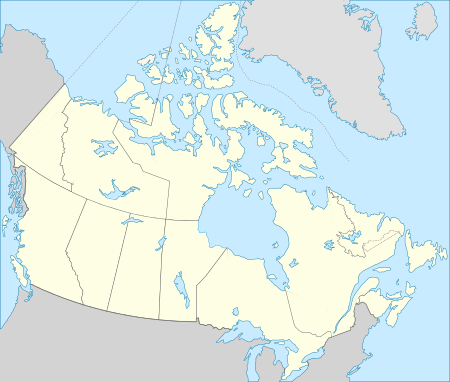
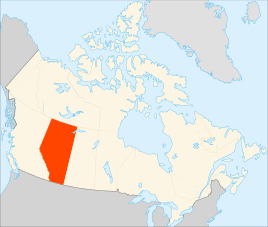

.jpg)

.jpg)
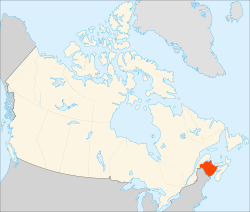
.jpg)

.jpg)

.jpg)
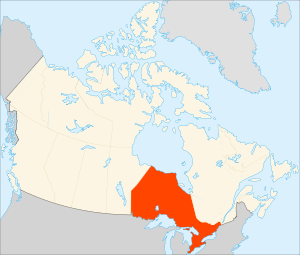
.jpg)
.jpg)
.jpg)
.jpg)

.jpg)
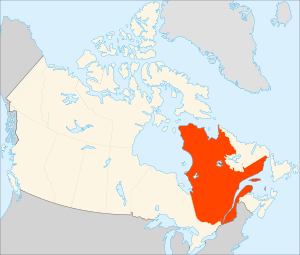
.jpg)
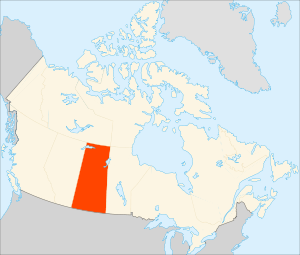
.jpg)
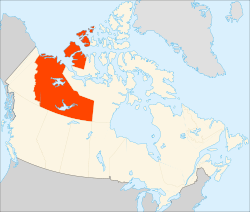
.jpg)

.jpg)

.jpg)
